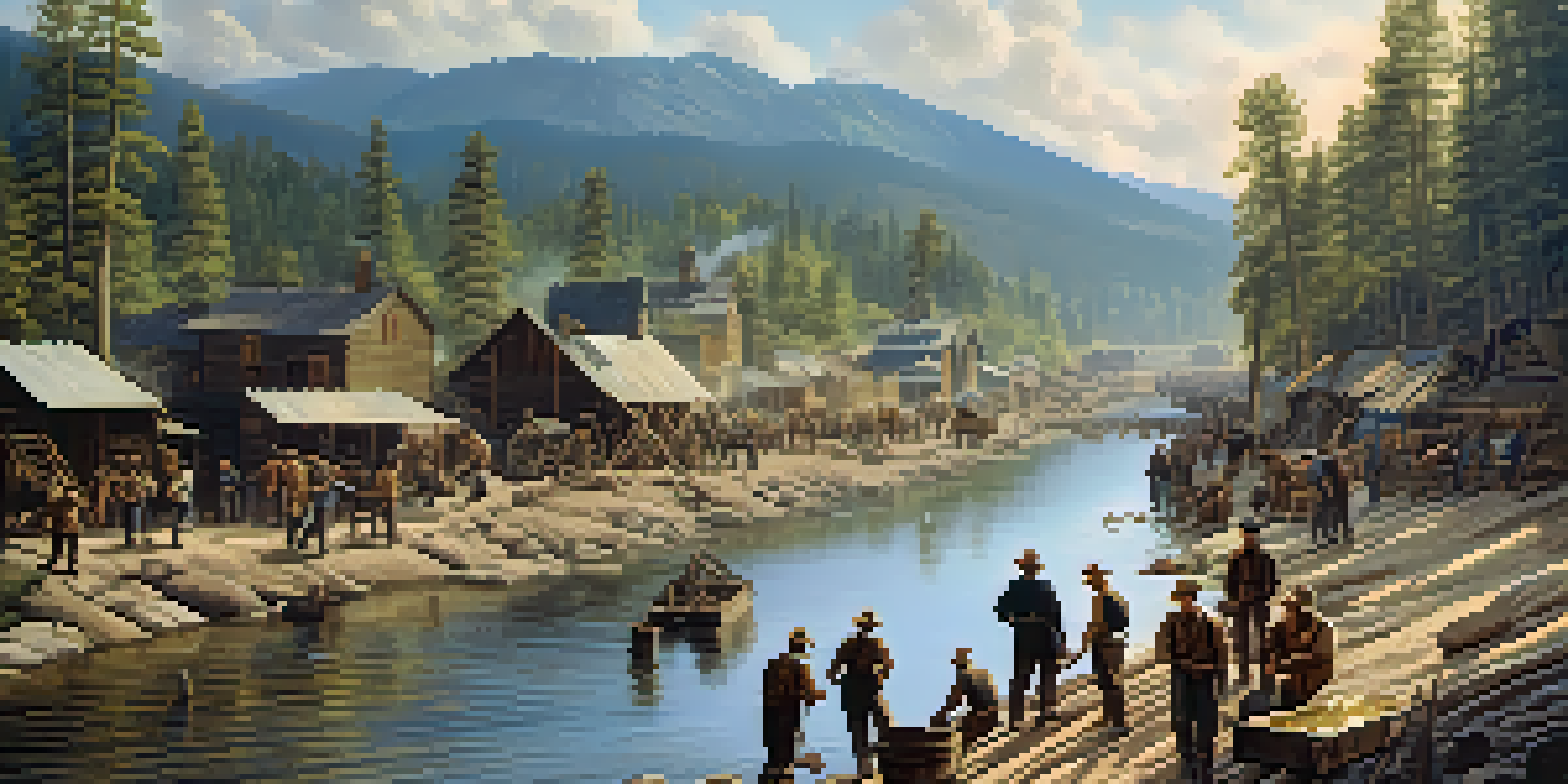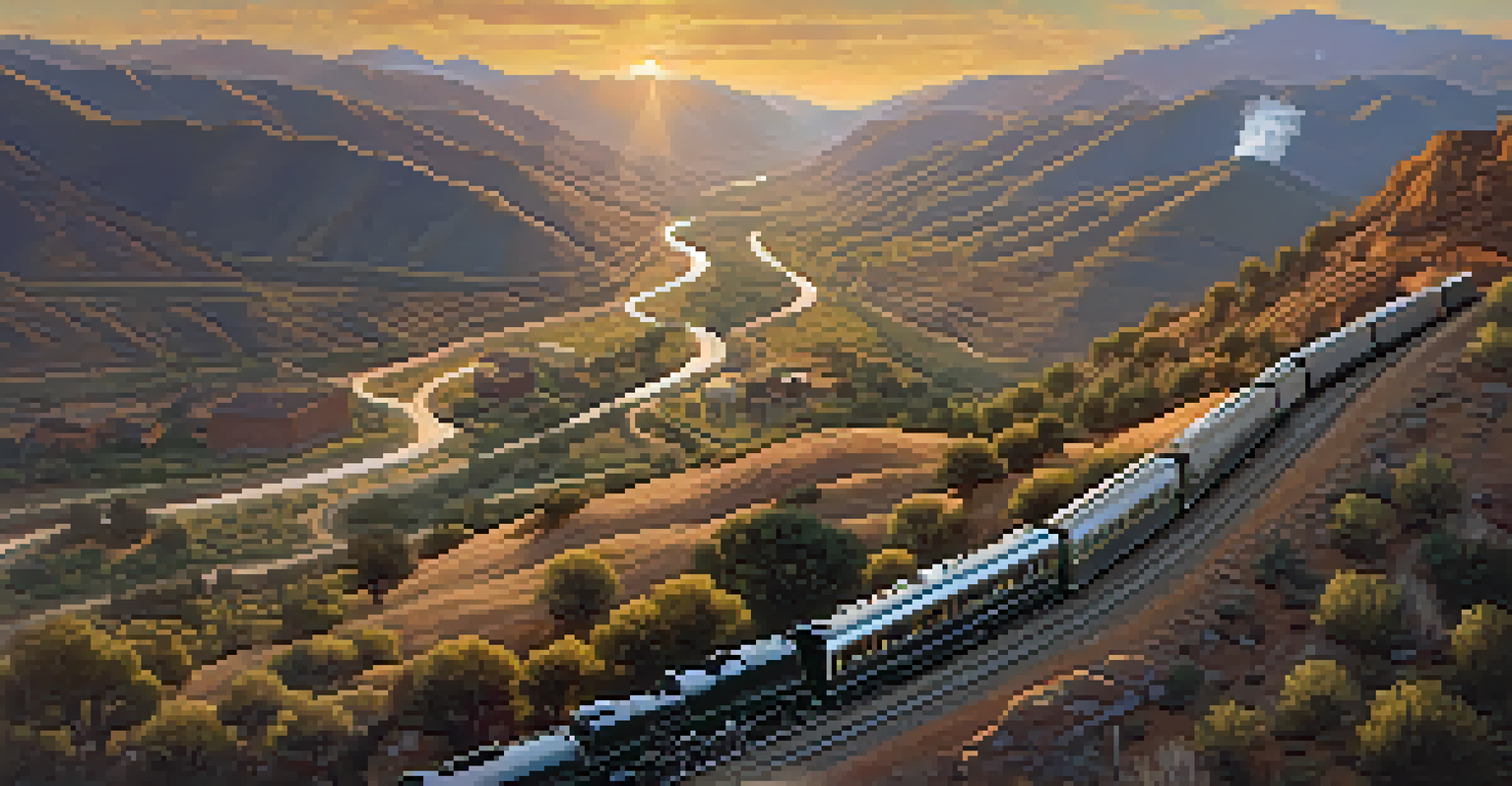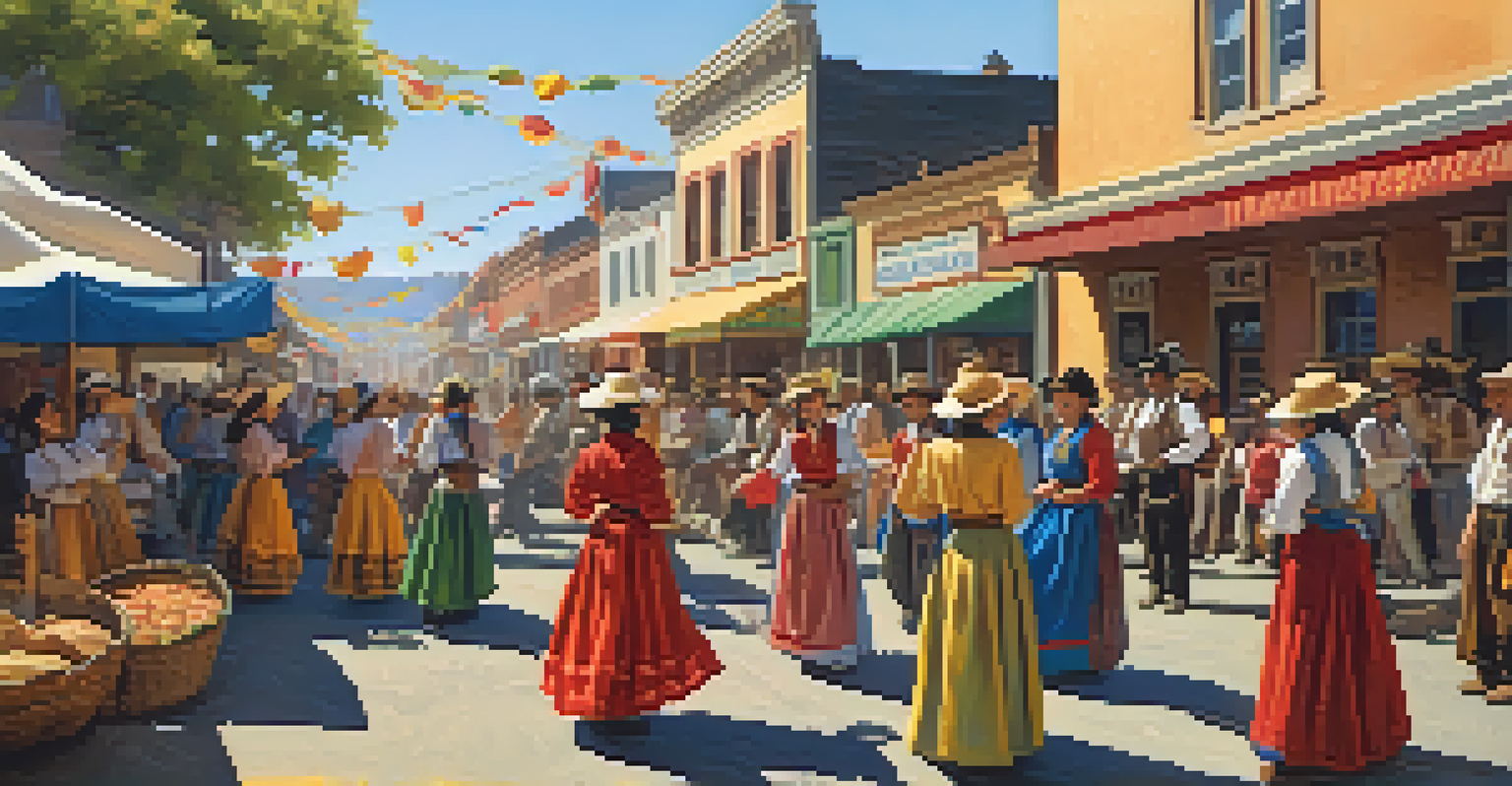Railroads and the Gold Rush: A Catalyst for California's Growth

The Gold Rush: A Dream Ignited in California
In 1848, a discovery at Sutter's Mill sparked a frenzy that would change California forever. Gold was found, and thousands flocked to the state in search of fortune. This influx of people brought both excitement and chaos, transforming California from a remote territory into the center of a gold-crazed rush.
It is better to risk saving a guilty person than to condemn an innocent one.
People from all walks of life joined the rush, leading to a diverse population that included miners, merchants, and hopeful entrepreneurs. Towns sprang up almost overnight, each serving as a base for the relentless search for gold. The sheer number of people converging on California created a unique blend of cultures and opportunities.
However, the excitement of the Gold Rush came with challenges. Infrastructure was severely lacking, and the vast distances between mining sites made it difficult for people and supplies to move efficiently. This is where the role of railroads would soon become pivotal in shaping California's future.
The Role of Railroads in California’s Development
As the Gold Rush progressed, the need for a reliable transportation system became increasingly urgent. Railroads emerged as a solution, providing a faster and more efficient way to move both people and goods across the rugged landscape. The construction of railroads promised to connect remote mining towns with urban centers, facilitating economic growth.

The Central Pacific Railroad, founded in 1861, became a key player in this transformation. Stretching from Sacramento to the east, it opened up new areas for settlement and commerce. As tracks were laid, the promise of easier access to resources and markets attracted even more people to California.
Gold Rush Ignites California's Growth
The discovery of gold in 1848 transformed California into a bustling hub of opportunity and diversity.
Railroads did more than just transport gold; they fostered the expansion of entire communities. Towns that were once isolated now thrived as rail links brought in supplies and connected them to larger markets. The rise of the railroad industry played a crucial role in shaping California’s economy and social fabric during this transformative period.
Economic Impact of Railroads on Gold Mining
The arrival of railroads revolutionized the gold mining industry, making it more accessible to a larger workforce. Miners could now easily transport their findings to markets, greatly increasing the efficiency of gold extraction. This economic boost attracted even more prospectors eager to try their luck in the mines.
The future belongs to those who believe in the beauty of their dreams.
Moreover, railroads provided essential supplies to mining operations, such as tools and food, which were crucial for sustaining the labor force. These logistical advancements helped mines increase production, thereby fueling California's economy. The symbiotic relationship between the railroads and gold mining laid the groundwork for long-term prosperity.
As the gold rush waned, the railroads continued to support California’s economy by diversifying its industrial base. They allowed for the transportation of agricultural products and manufactured goods, ensuring that California remained an economic powerhouse long after the last gold nugget was mined.
Cultural Exchange: Railroads and Migration
The construction of railroads not only facilitated economic growth but also fostered a rich cultural exchange. As rail lines expanded, they attracted immigrants from various countries, each bringing unique traditions and perspectives. This melting pot of cultures enriched California's social landscape.
Cities along the railroads became hubs of diversity, where people shared their customs, languages, and cuisines. Festivals and celebrations reflected this blend of cultures, creating a vibrant community spirit. The shared experience of the Gold Rush and the railroad transformed California into a place of opportunity for many.
Railroads Revolutionize Transportation
Railroads emerged as a crucial transportation system that connected mining towns and urban centers, fueling economic growth.
Additionally, as families settled along the rail lines, they contributed to the establishment of schools, churches, and businesses. This sense of community strengthened the ties among different groups, leading to a more cohesive society that celebrated its diversity while pursuing common goals.
The Environmental Impact of Railroad Expansion
While railroads brought economic benefits to California, they also had significant environmental consequences. The construction of tracks often involved clearing forests, altering landscapes, and disrupting local ecosystems. As towns expanded, the natural environment faced increasing pressures from human activity.
Mining operations, supported by railroads, led to the depletion of resources and contamination of water sources. The heavy machinery and rail transport left lasting scars on the land, raising concerns about sustainability. This ecological impact serves as a reminder that progress often comes with trade-offs.
Today, there is a growing awareness of the need for sustainable practices. California’s history with railroads and mining highlights the importance of balancing economic development with environmental stewardship. Reflecting on these lessons can guide future growth in a way that respects the land and its resources.
Railroads as a Catalyst for Urbanization
The expansion of railroads played a pivotal role in California's rapid urbanization during the Gold Rush era. As rail lines connected remote areas to urban centers, cities like San Francisco and Los Angeles experienced explosive growth. These cities became bustling hubs of commerce and culture, attracting even more people seeking opportunity.
The ease of transportation allowed for the migration of labor, spurring the development of various industries. Factories, shops, and services flourished in cities along the railroads, creating jobs and boosting the local economy. This urban growth marked a significant shift in California's demographic and economic landscape.
Legacy of Railroads Shapes California
The influence of the Gold Rush and railroads continues to impact California's economy, culture, and infrastructure today.
Moreover, the rise of urban centers facilitated advancements in education, healthcare, and infrastructure. As railroads linked communities, they paved the way for a modern California, characterized by innovation and progress. This urbanization laid the foundation for the state’s future as a leader in technology and culture.
Legacy of Railroads and the Gold Rush Today
The legacy of railroads and the Gold Rush continues to shape California’s identity today. The impact of this period can be seen in the state’s economy, cultural diversity, and infrastructure. California's history as a land of opportunity and innovation is deeply rooted in the events of the Gold Rush and the expansion of railroads.
Modern transportation systems owe much to the pioneering efforts of those who built the railroads. Today’s highways and transit networks reflect the foundational work that connected communities and fueled economic growth. The spirit of adventure and ambition that characterized the Gold Rush lives on in California’s entrepreneurial culture.

Furthermore, the stories and lessons from this era remind us of the importance of sustainable growth. As California faces new challenges, the balance between progress and preservation remains a vital conversation. The legacy of the Gold Rush and railroads continues to inspire generations to come.